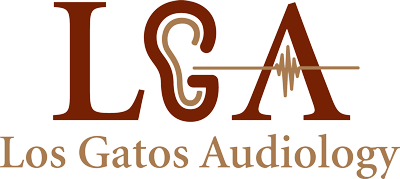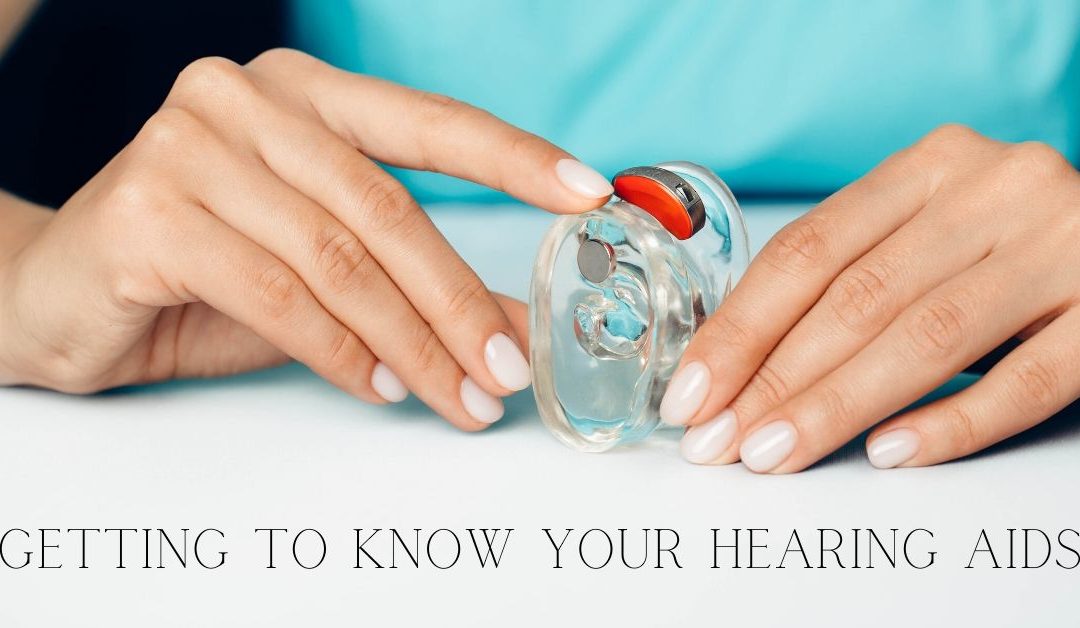Are you looking for new hearing aids? There are many different styles of hearing aids, and lots of unique programs and features that can help you hear when you need it the most. Here’s a guide to getting to know your hearing aids.
Styles of Hearing Aids
There are several styles of hearing aids to choose from. Behind-the-Ear (BTE) hearing aids nestle behind your ear, and have a small clear tube directing sounds from the hearing aid to your ear canal. Receiver-in-Canal (RIC) devices also sit behind the ear, but a small wire connects the hearing aid to a receiver that sits in the ear canal.
In-the-Ear (ITE) hearing aids sit within the outer ear, and are smaller than BTE devices. In-the-Canal (ITC) hearing aids sit in the ear canal itself, with only a small part showing at the top of the ear canal. And finally, Completely-in-the-Canal (CIC) hearing aids sit within the ear canal, and are very hard to spot.
Hearing Aid Basics
Hearing aids are designed to help you hear clearly. Wearing a hearing aid makes it easier to follow conversations, hear in places with a lot of background noise, and pick up on all the soft sounds in your environment. Wearing hearing aids can improve your quality of life, and help you stay social.
Hearing aids have five main parts.
- A microphone picks up all the sounds around you. It then converts the sound waves into electrical signals.
- A computer chip or circuit board analyzes the electrical signals, runs programs, and adjusts sounds to help you hear.
- An amplifier makes sounds louder.
- A receiver converts the electrical signals back into sound waves, and sends it to the ear canal.
- A battery provides power to the hearing aid.
Hearing aids are getting more advanced every day, and hearing aid technology can do some incredible things. These small devices are like mini-computers that can analyze the sounds around you, and help you hear even in the most complex listening environments.
Hearing Aid Programs
Today’s hearing aids have a number of advanced programs, and most hearing aids have sophisticated background noise reduction and speech enhancement programs. Hearing aids can be adapted to fit your hearing needs, and you can decide which programs and features you need to help you hear.
As you look for new hearing aids, think about the programs you’d like to have, and get to know more about your hearing aids.
- Bluetooth connectivity: An important program in many hearing aids is Bluetooth connectivity. This program lets you remotely connect your hearing aid to other electronic devices, like your phone, your TV, or even your car stereo system. You’ll be able to stream phone calls and audio right to your ears, and hear clearly without turning up the volume. With Bluetooth connectivity, you’ll also be able to control your hearing aids from a phone app, and change programs and settings without fiddling with your devices.
- Tinnitus therapy: If you have tinnitus, a ringing or buzzing sound in your ears, you can find hearing aids with tinnitus therapy programs. These programs are designed to bring relief from your tinnitus during the day. They use sound masking techniques to fade your tinnitus into the background, and you can play white noise, nature sounds, or even your own music to get relief from tinnitus.
- Telecoils: Another important program to consider is telecoils. Do you regularly attend religious services, concerts, or other events in auditoriums? A hearing aid with a telecoil can connect to a loop system at the venue. This allows your hearing aid to wirelessly tap into the sound system, and hear everything right in your ears.
- CROS hearing aids: Do you have single-sided hearing loss? A CROS hearing aid will make it easier for you to hear. The hearing aid in your bad ear will send sounds to the hearing aid in your good ear, so your good ear can help you hear all the sounds around you.
- Rechargeable hearing aids: Some hearing aids have rechargeable batteries. You can place the hearing aids on the charger overnight, and enjoy power during the day without having to replace the batteries.
Choosing the Right Hearing Aid
Our team is here to help you decide what style of hearing aid best suits your needs, and recommend the programs that will help you hear clearly. Contact us today to schedule a comprehensive hearing test!


